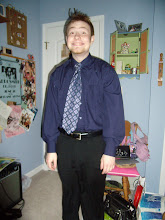Above, three theoretical positions were sketched. Each attempts to resolve the dilemma faced by an austere ontology. There is a certain sense in which an utterance of 'the table in front of me exists' reflects how the world is. Regularly, one could explain this by appealing to a type of object that is meant by use of the word 'table', a material object that is referenced by the definite description 'the table in front of me', etc. But one who denies that many such objects exist, as we do, cannot avail himself of these tools. One therefore is in need of an explanation.
The Indirect Correspondence theory of truth, presented by Horgan, appeals to two different types of truth. Direct Correspondence is a relatively rare semantic standard, only applying when one is serious about his metaphyiscs, i.e. when discussing ontology. According to DC standards, a sentence is true iff the ontic claims made in the sentence reflect existing ontology. For example, 'the sky is blue' is DC true iff the single object referenced by 'the sky' has the property referenced by 'blue'.
Usually, though, an individual is not all that concerned with directly referencing actually existing objects. In these contexts one evaluate sentences under IC standards. These standards are not systematic, however, and vary across contexts. More will be said on IC standards later.
The Paraphrase Strategy works by converting everyday discourse into "literal" claims about the world. As noted above, an utterance of 'the sun moved behind the trees' is true because it can be unpacked into a complex series of claims about optics, the movement of celestial bodies, etc.
But such an analysis is problematic because it creates a disconnect between the intentions of an utterance by the speaker and an utterance itself. Consider two separate utterances of 'the sun moved behind the trees'. Utterance A is made by a 10th-century English peasant on his 20th birthday. Utterance B is made by a 21st-century physics student on his 20th birthday. What the English peasant intended to say is that, quite literally, the yellow object in the sky moved until it was behind the trees. The physics student, however, did not literally mean the sun moved while the trees remained stationary; he utilized the Paraphrase Strategy to cite a complex physical fact in six words. No such intention existed for the peasant. Indeed, if one were to ask him if he, in actuality, meant to say that the earth rotated until light emanating from the sun was obscured by trees he would say no.
This puts the Paraphrase strategy before another dilemma. Utterance A is either true or false. If it is false, then an explanation is required. Under what conditions does a paraphrase strategy succeed? Is it just in case the speaker is aware of the relevant facts and intends to use a particular utterance as a paraphrase for them? If this were the case then an enormous, perhaps insurmountable, epistemic burden is placed before any individual who hopes to say something true about the world. But if we maintain that what the peasant said is true, then there is reason to conclude that intention need not have any bearing on the truth of an utterance. If one maintains that speaker intentions play a vital role in the correct semantic theory (whatever it may be), one should seek an alternative to the Paraphrase Strategy.
Subscribe to:
Post Comments (Atom)

No comments:
Post a Comment